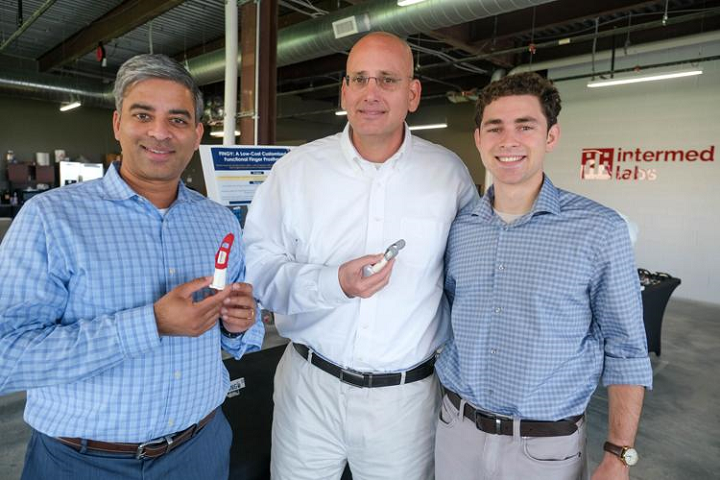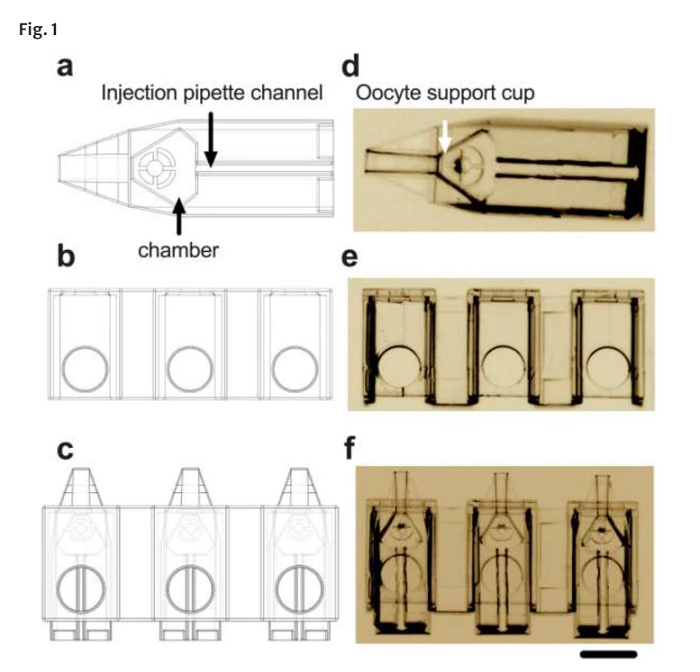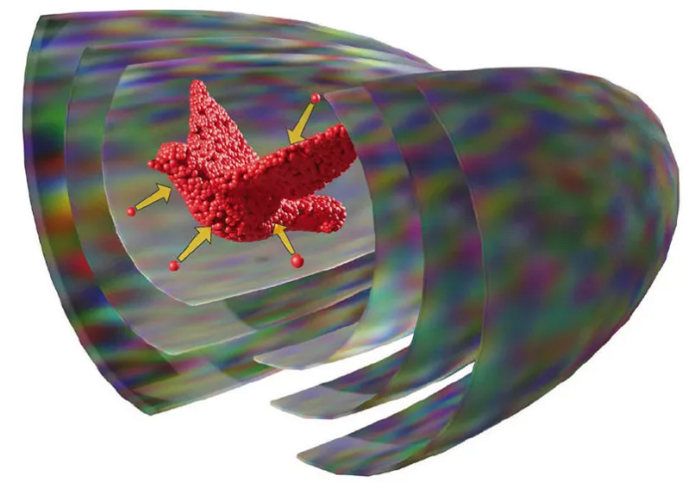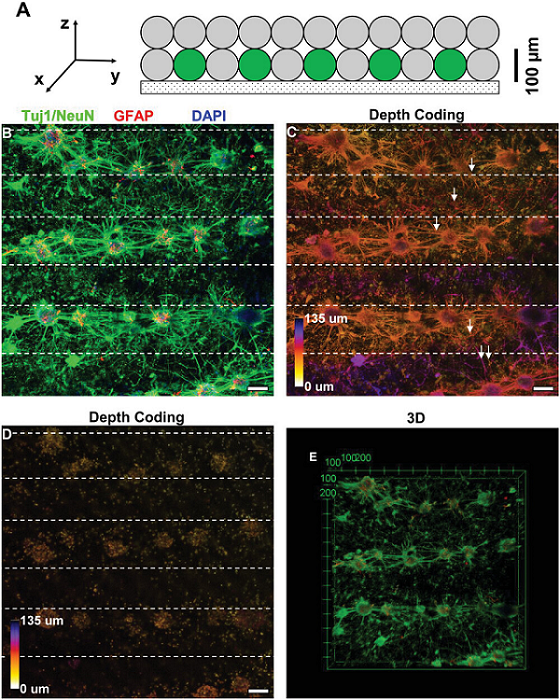We’re starting with business today in 3D Printing News Briefs, with stories from Nexa3D and Headmade Materials, Desktop Metal and FreeFORM Technologies, and 3D Systems. ELEGOO debuted a new printer at a trade show, Intermed Labs is working to make prosthetics more accessible, and a 3D printed microdevice could transform male infertility treatment. Finally, there’s some interesting research about assembling matter in 3D, and then bioprinting living brain cell networks.
Nexa3D Enters Metal AM Space with Headmade Materials’ ColdMetalFusion

Providing ultrafast print speed and a 24-hour cycle time, the QLS 3D printers are the most versatile SLS printers on the market, producing both polymer and metal components using the ColdMetalFusion process
Ultrafast polymer 3D printing provider Nexa3D is extending its metal SLS capabilities through a strategic collaboration with Headmade Materials and its sinter-based ColdMetalFusion process. This will make Headmade’s unique feedstock technology compatible with its own high-throughput QLS 3D printer lineup, and allow customers to get around productivity barriers in metal parts production. ColdMetalFusion combines established powder metallurgy processes with the advantages of polymer laser sintering, and Nexa3D will leverage the ecosystem around this process, so that both companies can offer equipment, materials, services, software, and expertise to customers in the metal manufacturing industry.
Christian Fischer, Co-CEO of Headmade Materials, said, “We are impressed by the speed and throughput capabilities of Nexa3D technology and couldn’t be more excited to partner with them to expand access and adoption of ColdMetal Fusion technology.”
Desktop Metal Sells Metal Binder Jet Systems to FreeFORM Technologies

FreeFORM Technologies President Nate Higgins, shown in front of a Desktop Metal X25Pro, now operates the world’s largest fleet of 25 Desktop Metal binder jet 3D printers, which transform metal powder into complex end-use parts. The Pennsylvania-based FreeFORM is also slated to take delivery of a Production System P-50, the world’s fastest metal binder jet system with Single Pass Jetting (SPJ) technology.
Desktop Metal has sold a Production System P-50, and a Super Fleet of metal binder jet systems, to Pennsylvania-based FreeFORM Technologies, which was founded in 2020 and boasts industrial metals processor and distributor Ryerson Holding Corporation as a leading investor. With this purchase, FreeFORM now owns and operates the world’s largest fleet of Desktop Metal printers—a total of 25, including the Production System, Shop System, and X-Series models. The company has produced over 350,000 parts with binder jetting for global customers in the consumer goods, defense, industrial, medical, and robotic markets.
“FreeFORM’s investment in metal binder jetting demonstrates our continued commitment to employing world-class additive manufacturing processes to meet the needs of our customers. This addition of DM printers strengthens our capabilities in this area, allowing us to provide greater cost efficiency and speed to market,” said Nate Higgins, President of FreeFORM Technologies.
3D Systems Completes Insourcing of Manufacturing for Printer Platforms
3D Systems has completed a strategic initiative to streamline production by insourcing the manufacturing of two additional strategic 3D printer platforms. The activity was transferred from two electronics manufacturing services (EMS) partners, which the company maintains commercial relationships with to expand global adoption of the metal and polymer production AM platforms. The company now controls the whole manufacturing process from start to finish. By insourcing these printers in Riom, France and Rock Hill, South Carolina facilities, 3D Systems can offer improved quality control, faster introductions of new products, and decreased manufacturing cycle times, all of which enhances customer satisfaction.
“Our customers want reliable, high-quality products that meet their evolving needs for use in factory production environments. In-house manufacturing not only enables us to streamline production and reduce lead times, but it also allows us to offer competitive pricing through more efficient operations,” explained Dr. Joe Zuiker, 3D Systems’ Executive Vice President of Engineering & Operations. “This means our customers can receive greater value from our production printers, faster than ever before. We elevate our commitment to customer satisfaction by also providing printing process solutions tailored to our customers’ unique requirements and exceptional customer support. Our continuous improvement is helping our customers accelerate their adoption of additive manufacturing and thereby attain a competitive advantage in their market.”
ELEGOO Debuted First Large FDM Industrial Printer at TCT Asia
During the recent TCT Asia 2023 exhibition in Shanghai, ELEGOO made its successful debut with a showcase of its latest products, including the OrangeStorm Giga, the company’s first large FDM industrial 3D printer, and its Jupiter SE resin printer. ELEGOO is a fast-developing brand in the global smart manufacturing industry, specializing in R&D, sales, and manufacturing of consumer-grade 3D printers and smart technology products.
At this year’s annual event, ELEGOO divided its exhibition into three separate zones to offer attendees an immersive experience of professional 3D printing. In the Product Display Zone, the company featured its classic consumer-grade resin and FDM printers, including the award-winning Mars and Saturn series. The standout was its new lightweight OrangeStorm Giga, featuring an 800 x 800 x 1000 mm print area, Klipper high-speed silent motherboard, unique extrusion design, and quick setup. The Printing Zone allowed visitors to immerse themselves in 3D printing, with product engineers on hand to answer questions and offer guidance. Finally, ELEGOO also set up a zone for model showcasing, focused on widespread industry applications like jewelry design, educational models, and anime figurines.
Intermed Labs Makes 3D Printed Prosthetics Accessible

Ashok Aggarwal, Tom McClellan and Ryan Gross inside their venture startup studio, Intermed Labs, in Morgantown, where they designed Fingy3D, a way to cheaply manufacture finger prosthetics using AI and 3D printers. Despite an initial interest in working for NASA or SpaceX, Intermed impressed Gross enough with the quality of its projects that he chose to work at the startup studio instead. “We have incredible talent in the state,” McClellan said. “And I’m really proud of the fact that were utilizing some of that talent. We’re going to make this area of West Virginia a tech hub. I’m gonna keep saying until it happens.” Photo by Esteban Fernandez
Plastic and reconstructive surgeon Dr. Tom McClellan is the CEO of venture startup studio Intermed Labs, based in Morgantown, West Virginia. The company helps advance technological breakthroughs, and create real, workable devices that are brought to market, which doctors come up with to improve patient care—like Fingy3D. These 3D printed on-demand prosthetic fingers are very accessible—patients take a cell phone picture of their hand from anywhere in the world, send it to the company, and AI views the photograph and sculpts a drawing of the prosthetic, which is then put into a CAD program to create a 3D printable file. Plus, Fingy3D prosthetics start at $300, as opposed to the typical $5,000 price tag that can be a barrier to many patients. The Intermed Labs team hopes Fingy3D will eventually be purchased by a company that has the resources to bring it to more people around the globe.
“You know, prosthetics are needed in other countries, maybe even more so than the U.S. Having an organization that has broader reach, I think could definitely allow this to scale,” said Ashok Aggarwal, Strategy and Technology, Intermed Labs. “Probably reduce the cost that this product has, which is already so low, but it’s possible that it can be reduced even further and really just get in the hands of more and more people that are living at least some part of their life sub-optimally.”
3D Printed Microdevice Could Improve Success of Male Infertility Treatment

Design and fabrication of a device on the micron scale for oocyte microinjection. Three-dimensional schematic of the Pod (a) and Garage (b) and an illustration of three Pods docked within a Garage (c). The Pod (d) and Garage (e) were fabricated using two-photon polymerization (Nanoscribe GmBH, Eggenstein-Leopoldshafen, Germany). In (c) and (f), 3 Pods are docked within a Garage (1500 × 450 × 310 μm; l × w × h). The Pod (725 × 250 × 250 μm) includes access for an injection pipette (injection pipette channel (a and d)) and a chamber with a raised bed that houses and holds the oocyte during microinjection (oocyte support cup (a and d)). Images (d, e, and f) were taken using a 20 × objective with a final magnification of 20 × (Nikon SMZ1500 microscope, Nikon Instruments, Inc., NY, USA). Scale bar = 250 μm
A team of researchers from the University of Adelaide want to improve in vitro fertilisation (IVF) with a 3D printed microdevice that streamlines the intracytoplasmic sperm injection (ICSI) procedure—the only available treatment for men with low sperm counts. Currently, eggs and sperm are picked up with tiny suction devices, which are then aligned in a 3D space for injection. But this requires extremely delicate hands, or irreversible damage can be caused. It’s now possible to 3D print devices that are small enough to hold individual eggs for the procedure, and this microdevice is smaller than a pinhead. It contains pods that house single eggs, which are picked up with fine forceps and docked in a supporting device, so the embryologist knows exactly where they are. The device, which already went through preclinical trials, streamlines the process, and is in the process of being commercialized by medtech company Fertilis.
“With this new process, an embryologist … can become highly skilled at ICSI, and hopefully we won’t see the variability in success across different clinics and different embryologists,” said lead researcher Dr Kylie Dunning from the Robinson Research Institute. “Hopefully it can be a one-stop shop, where embryologists can perform the injection and embryo culture in the one device.”
You can learn more in the team’s research paper.
Optimized Acoustic Holograms for 3D Printing Biological Cells

The use of sound waves to create a pressure field to print particles. (Image: MPI for Medical Research, Heidelberg University/Kai Melde)
Continuing with research, a team from Heidelberg University and Max Planck Institute for Medical Research developed a method for assembling matter in 3D, and it uses sound waves. In typical 3D printing, objects are built a layer at a time, but these researchers figured out how to form a 3D object from smaller building blocks in one step. The process uses several acoustic holograms—optimized with an algorithm—to generate pressure fields with which gel and hydrogel beads, solid particles, and biological cells can be 3D printed. The team captured cells and particles floating freely in water, and used high-frequency ultrasound to push the wavelengths into the microscopic realms and manipulate them into 3D shapes. Ultrasound is gentle on biological cells, and can travel deep into tissue for remote formulation, so this work could lead to novel 3D cell culture techniques for biomedical engineering.
“The crucial idea was to use multiple acoustic holograms together and form a combined field that can catch the particles,” explained Kai Melde, postdoc in the group and first author of the study.
3D Printing Nerve Networks in the Lab with Bioinks

Bioprinted cortical neurons and astrocytes after in vitro culture at 7DIV. A) Cross-section view of bioprinted structure consisting of cellular (green) and acellular (grey) strands. B) Maximum intensity projection of patterned structure: cellular–acellular–cellular. Neurons (NeuN, green), astrocytes (GFAP, red), and nuclei (DAPI, blue) were colocalized and developed complex structures. Axons (Tuj1, green) originating from the proximal cellular strands projected across the distal cellular strand. C) Depth-coding of Tuj1/NeuN showed the development of axonal projections across strands. White arrows indicate neurites that belong to different focal planes. D) Depth-coding of DAPI shows localization of cell nuclei. E) Confocal image in 3D. Depth-coding was represented using a color bar: red, closest to the glass substrate, and blue, 135 µm away from the substrate. Scale bar, 100 µm.
Finally, researchers from Monash University have 3D printed bioinks containing living nerve cells (neurons) that can grow in the lab, and actually transmit and respond to nerve signals. 2D nerve cell cultures have been used in the past to study how nerve networks and disease mechanisms are formed, but the flatter structures don’t really reflect how the neurons grow and interact with their surroundings. On the other hand, bioprinted 3D neural networks have potential for deep study of the formation and growth of nerves and nerve networks, screening drugs for their effects on the nervous system, and investigating how some diseases can affect neurotransmission. The team used tissue engineering and bioprinting to mimic the arrangement of white and grey matter in the brain, and sensitive electrophysiological measurements confirmed that spontaneous nerve-like activity was happening in the living brain cell networks, along with responses resulting from drug and electrical stimulation.
“The networks grown in this research closely replicated the 3D nature of circuits in a living brain, where nerve cells extend processes called neurites to form connections between different layers of the cortex,” said Professor John Forsythe of the Department of Materials Science and Engineering, who is leading the research.
“We found that the projections growing from neurons in the printed ‘grey matter’ or cellular layer readily grew through the ‘white matter’ layer and used it as a ‘highway’ to communicate with neurons in other layers.
“Not only were we able to construct a basic layout similar to what we see in regions of the brain, we found that the neurons actually behaved and performed in a similar manner.”
You can learn more in the team’s study.
Subscribe to Our Email Newsletter
Stay up-to-date on all the latest news from the 3D printing industry and receive information and offers from third party vendors.
You May Also Like
Gorilla Sports GE’s First 3D Printed Titanium Cast
How do you help a gorilla with a broken arm? Sounds like the start of a bad joke a zookeeper might tell, but it’s an actual dilemma recently faced by...
Nylon 3D Printed Parts Made More Functional with Coatings & Colors
Parts 3D printed from polyamide (PA, Nylon) 12 using powder bed fusion (PBF) are a mainstay in the additive manufacturing (AM) industry. While post-finishing processes have improved the porosity of...
$25M to Back Sintavia’s Largest Expansion of Metal 3D Printing Capacity Since 2019
Sintavia, the digital manufacturing company specializing in mission-critical parts for strategic sectors, announced a $25 million investment to increase its production capacity, the largest expansion to its operations since 2019....
Velo3D Initiates Public Offering in a Bid to Strengthen Financial Foundations and Drive Future Growth
Velo3D (NYSE: VLD) has been among a number of publicly traded 3D printing firms that have attempted to weather the current macroeconomic climate. After posting a challenging financial report for 2023,...
































